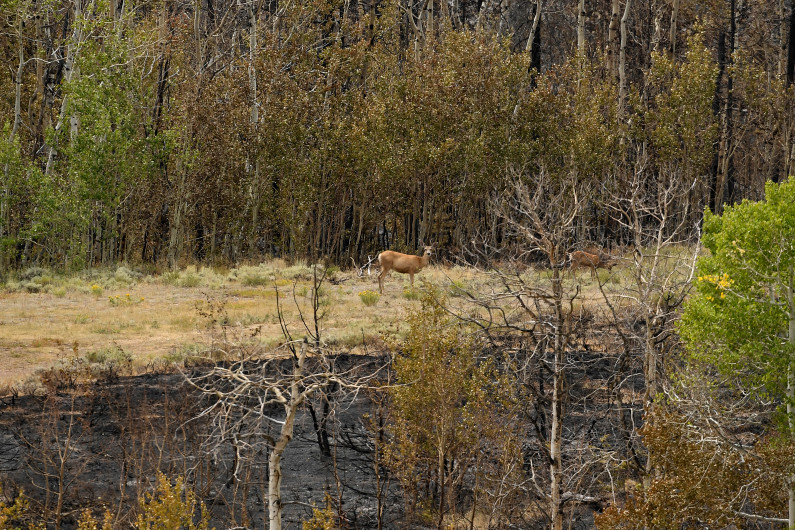Save our national forests with a simple fire funding fix
Posted: April 5, 2018Source: Denver Post

Helen H. Richardson, The Denver Post
It should be a simple nonpartisan fix to a budgeting issue that every year strips the U.S. Forest Service of its ability to adequately manage millions of acres of federal land and the trails, roads and structures that allow Americans to enjoy their forests.
Instead, for more than two decades the issue has eluded common sense, mired in an unnecessary proxy battle that pits the logging industry against environmentalists.
We are hopeful that 2018 will be the year — with a single party solidly in control of this nation and a common-sense proposal gaining steam in the Senate — that Congress can address this funding crisis.
But it will require leadership from Republicans, especially those like Colorado’s U.S. House members Scott Tipton, Doug Lamborn, Mike Coffman and Ken Buck who can bridge the partisan divide by supporting and advocating for a bipartisan Senate proposal that removes the politics from what should be a simple funding debate.
In 1995, fighting wildfires accounted for 16 percent of the U.S. Forest Service’s budget, but last fiscal year the agency spent more than $2 billion battling record-setting blazes in the West, gobbling up 56 percent of the agency’s budget. That leaves precious few resources to run the department, and even less money to engage in the kind of land stewardship that could prevent some wildfires and reduce the intensity of others.
The simple fix, as proposed in the Senate’s Wildfire Disaster Funding Act of 2017, would cap how much the Forest Service must dedicate in its current budget to fire suppression. It would also end “fire borrowing,” which forces the department to steal from its other needs when that firefighting budget is exceeded. Instead, any additional funds needed in a fiscal year will come from natural disaster funding supplied by Congress.
U.S. Sen. Michael Bennet has been pushing for that bill, which Sen. Cory Gardner also co-sponsored when it was first introduced, to be included in the upcoming omnibus appropriations package.
Freeing up resources for better forest management — thinning forests in key wildland-urban interface areas, removing matchstick-like dead timber and treating infestations and disease that threaten forest health — should reduce fire suppression spending in the long run.
“Our nation’s forests are in crisis,” wrote six former Forest Service chiefs in a January letter to Congress’ four party leaders (Tony Tooke, the former head of the Forest Service who resigned on Wednesday following accusations of sexual harassment, did not sign the letter). “The unprecedented levels of insect and disease epidemics, combined with extended drought and climate change have caused tree mortality at the highest levels in recorded history.”
What, one might ask, could possibly be standing in the way of such a common-sense solution to a problem we’ve been opining on for years?
Well, Rep. Bruce Westerman, R-Ark., and Rep. Rob Bishop, R-Utah, are pushing a separate bill that passed the House in November. The Resilient Federal Forests Act includes the funding fix but also would try to expedite the current environmental protection permitting process for logging.
Westerman’s bill has its merits, but holding up a separate funding fix that could get existing projects already approved underway is not in the best interests of Americans or their forests. Better to strip out the controversial elements and give the U.S. Forest Services the resources it needs as part of the upcoming omnibus appropriations package.
“If not now when?” the chiefs asked Congress’ leaders in their letter. “The future of our forests is in your hands.”

